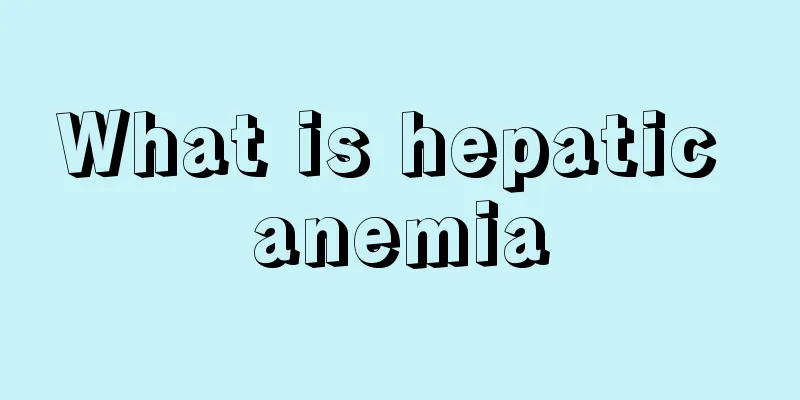The difference between proctitis and colitis

|
Patients with enteritis often only know that they have enteritis, but are not particularly clear whether they have proctitis or colitis. Although both proctitis and colitis have adverse reactions such as diarrhea and abdominal pain, there are obvious differences between them. In addition to the different sites of onset, there are more obvious differences. The specific characteristics and differences between proctitis and colitis can be seen in detail below. 1. Proctitis: It refers to inflammation that occurs in the rectal mucosa, muscular layer and surrounding tissues. Common ones include: acute proctitis, chronic proctitis, radiation proctitis, tuberculous proctitis, etc. The main symptoms of proctitis include alternating constipation and diarrhea, stool mixed with mucus and blood, anemia, fever, weight loss and fatigue, etc. If acute proctitis is not cured for a long time, it will turn into chronic proctitis, causing congestion and edema of the rectal mucosa, erosion of the rectal mucosa, severe erosion, rectal perforation, and eventually leading to rectal cancer. 2. Colitis: It refers to the inflammation that occurs in the sigmoid colon mucosa, muscular layer and surrounding tissues, also known as nonspecific ulcerative colitis. The main clinical manifestations of colitis are abdominal distension and pain, diarrhea, bloody stools, and constipation, often accompanied by symptoms such as loss of appetite, indigestion, insomnia, and nightmares. The course of colitis is chronic, with attacks and remission periods alternating and worsening, leading to colon perforation and transformation into ulcerative colitis, causing massive gastrointestinal blood loss and even heart failure. Therefore, patients need timely treatment. To avoid serious consequences. Patients diagnosed with colitis may wish to try the effects of stachyose. Stachyose has a good therapeutic effect on colitis. Stachyose is not broken down by digestive enzymes and cannot be used by harmful bacteria. It can target and regulate the balance of gastrointestinal flora and reconstruct a benign microecological environment. 3. Proctitis and colitis are both inflammations of the large intestine, and they have different characteristics: 1. In the early stage of colorectal inflammation, symptoms include redness, swelling, heat, pain, abdominal pain, bloating, constipation, diarrhea, bloody and mucous stools, and tenesmus. 2. Colorectal inflammation is often caused by anorectal diseases such as hemorrhoids, constipation, diarrhea, anal fistula, anorectal prolapse, and rectal tumors; 3. Colorectal inflammation is divided into acute and chronic inflammation. As the disease progresses, it will develop into ulcerative intestinal perforation, seriously affecting the function of surrounding organs. In addition, both diseases are important to prevent. As long as you pay more attention to details in your daily life, you will stay away from this disease. Finally, I wish you all a healthy body. |
<<: The difference between Qipi Pills and Jianpi Pills
>>: The difference between fever and heat stroke
Recommend
What are the dangers of excessive exercise
Exercise can indeed improve our body's resist...
Is targeted therapy for liver cancer effective? Introduction to targeted therapy for liver cancer
Liver cancer is a malignant tumor that is extreme...
How much water do you drink to cause water poisoning? It turns out this is what's going on
Elderly people often say, "If you want to be...
What are the advantages of plant hair dye
Many people know that long-term and frequent hair...
What are the symptoms of a ruptured eardrum? How to treat
A ruptured eardrum is also a kind of trauma to th...
Differential diagnosis of advanced right renal cancer
No matter what the disease is, it must be diagnos...
How do you know the moisture has been discharged
When there is too much moisture in the body, it w...
Why do I feel dizzy when I move my head?
If you feel dizzy when you move your head in dail...
My lower abdomen is pulling and hurting my buttocks
When women feel the symptom of lower abdominal pu...
What are the treatments for advanced bladder cancer?
Conservative treatment of advanced bladder cancer...
Who are the high-risk groups for colorectal cancer
People at high risk of colorectal cancer are much...
Is it okay to freeze honey?
Honey is produced by bees in spring, summer and a...
Reasons for diarrhea caused by air conditioning
With the continuous improvement of living standar...
Pain inside the cheek
There are nerves, ligaments, lymph nodes and musc...
Patients with gallbladder cancer should take timely treatment measures
In recent years, with the increasing incidence of...









